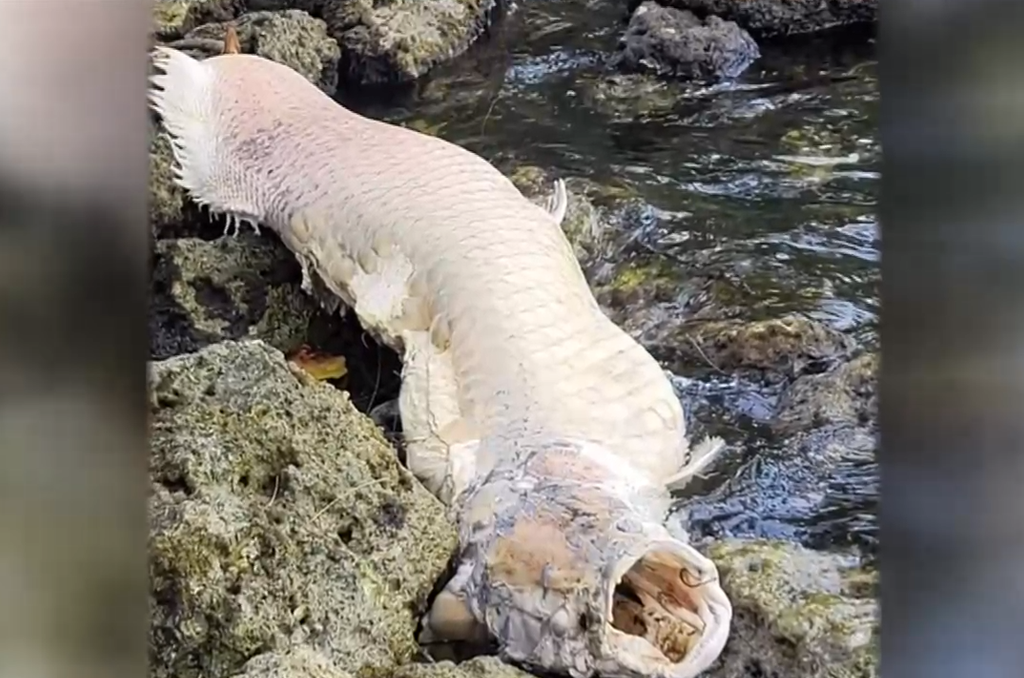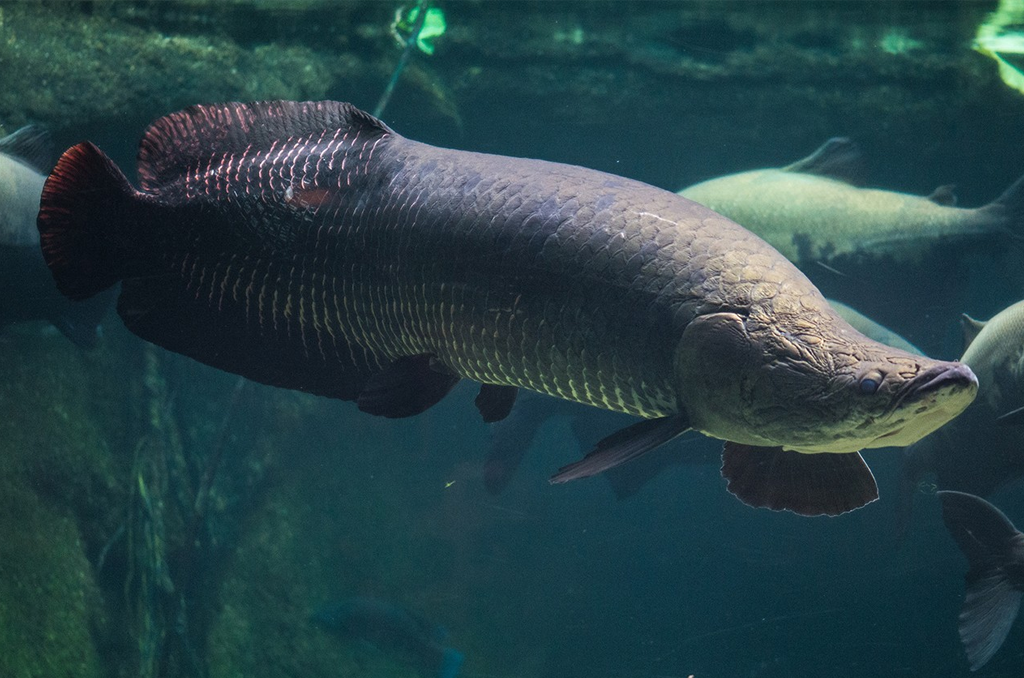Courtesy: Smithsonian’s National Zoo & Conservation Biology Institute
Florida has dinosaur-like gators, invasive lizards, record-breaking Burmese Pythons, and just about anything else you can think of in its diverse ecological system. As if that weren’t enough to cause residents and tourists to worry when visiting their favorite state parks and attractions, there’s one more creature to add to the list—the Arapaima.
Discovered over the weekend, a Florida woman was walking through Cape Coral’s Jaycee Park when she noticed a large, odd-looking, dead fish washed up along the rocks of the Caloosahatchee River.
“It was bigger than my 7-year-old. I thought, ‘that is nothing I’ve ever seen before,’” said Cape Coral resident Leah Getts. “It was kind of white with a pinkish tail. It had a huge kind of open bass looking kind of mouth. It didn’t look like anything I had heard of or seen before.”

But when and doubt, take a picture and post it on social media if you don’t know what it is. And sure enough, social media users were quick to identify the Amazon-based Arapaima.
“They were saying it was an Arapaima, and I looked at pictures, and it was dead on,” added Getts.
The Arapaima fits the Florida story bill. If you’ve ever seen the Discovery Channel’s show “River Monsters,” then there’s a chance that the creature may not be so unfamiliar to you.
Getts first noticed the dead fish carcass floating along the water’s surface before snapping the photo and sharing it on social media. She noticed that the strange fish still had a hook in its mouth, signaling that it had potentially been the victim of someone’s recreational fishing adventure. Fishing at Jaycee Park is only allowed from the shoreline.
But after the photo was posted and users realized it was a “river monster,” it only posed more questions, like how it got to the Florida river.
“The primary concern with Arapaima is that they would become established and reproduce naturally,” said John Cassani, an Ecologist for the Calusa Waterkeeper.
Much like any invasive species, the Arapaima would thrive in the warm weather climate of Florida’s ecosystem. The aggressive and predatory freshwater species would pose a number of threats to the ecosystem if they were to spread naturally beyond containment.
“Obviously, a big aggressive predatory fish is popular amongst anglers. But the risk to the ecosystem far outweighs the recreational value of the species,” added Cassani.
According to the Smithsonian’s National Zoo and Conservation Biology Institute, the Arapaima is potentially the largest freshwater fish in the world with a growth potential of up to 440 pounds (200 kilograms) and 10 feet (3 meters) in length. While that is an extreme case in size, they are traditionally found around half that weight and about 7-8 feet in length, putting it closer to the one found along the Caloosahatchee.
Are you interested in Florida’s nature? For stories like this and much more: Florida Insider is dedicated to educating, entertaining, and informing its readers about everything Florida. Easy to read content at the palm of your hands and covering the stories that matter.

